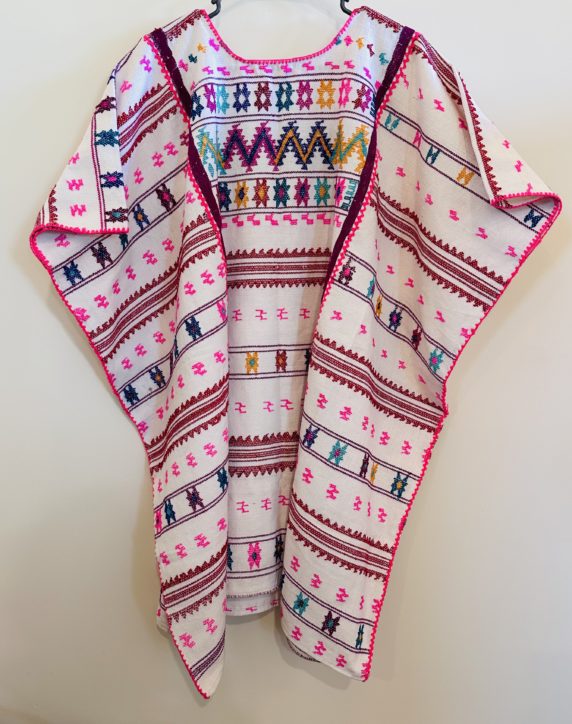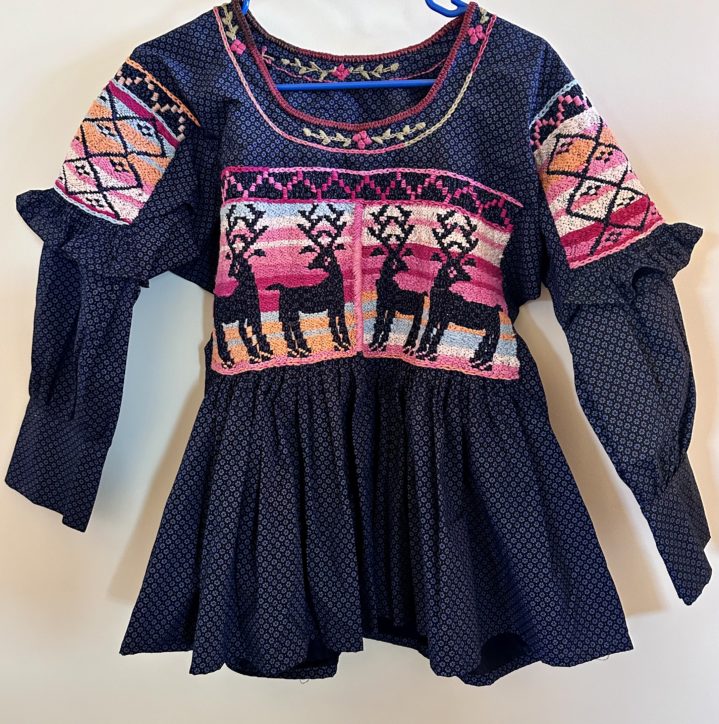My North Carolina friends just left the village after spending a week with me celebrating a belated birthday. It was a bash! Mucho mezcal. Mucha fiesta. Mucha comida. Lots of travel to villages to visit favorite artisans.
We spent a morning with antiquarian Adrian Montaño in Teotitlan del Valle. I met Adrian a couple of months ago when I was visiting with friends Christophe and Rogelio who operate Maison Gallot. But, I had seen him around town, in the market, always impeccably dressed, a woven straw hat topping off the costume.

Adrian lives in a part adobe, part brick and part concrete house tucked into the hillside above the village. He has a wonderful view. He has one very ancient loom. His house is adorned in antiquities and a beautiful altar. He has been weaving since he was a boy. He is now age 75 and still productive.

In the 1960’s, missionaries came to town and began a program of conversion, translating oral Zapotec into English. (Many still do, and call themselves linguists.) They befriended Adrian, who decided that rather than convert, he would learn English from them.

His language skills are impeccable and he speaks Zapotec, his first language, Spanish and English flawlessly. He says it is important for young people to keep the language traditions alive. To earn a living, he teaches Zapotec and English to village youth, and weaves ponchos.

His hidden treasures are a stash of vintage textiles that he wove himself, mostly when he was in his twenties, and those he has collected over the years. We were treated to a Show and Tell. I am sharing the photos of these beauties here.

In the 1930’s and 1940’s, most of the textiles woven were bed blankets. They were natural sheep wool or were synthetic dyes most common to the era — red, green and black. Motifs were animals, birds and symbols of Mexican nationalism. Few remain in pristine condition. Storage is a problem and moths love the dark “chocolate” richness of natural wool.

Back then, the looms were narrower and to make a bigger tapestry, the weavers needed to create two exact pieces and then sew them together down the middle. Each side needed to match up! Only the masters could achieve this. These became either blankets or ponchos/serapes.

It was not until the early 1970’s that blankets then became adapted to become floor rugs. This happened when young travelers came to Oaxaca from the USA, saw the beautiful weavings produced in Teotitlan del Valle, understood the beginning craze of Santa Fe Style and worked with weavers to create sturdier floor tapestries.

Many back then brought Navajo designs with them and contracted with weavers to reproduce Native American designs that were then sold throughout the Southwest. Thus, began the rug-weaving boom in the village where I live.

Today, there is a return to natural dyes and to the traditional Zapotec designs that are found on the stone walls of the Mitla Archeological Site. Moreover, young weavers are developing their own style, taking traditional elements and making them more contemporary, innovating to meet a changing marketplace.
Adrian Montaño has a reverence for his roots. He openly shared his collection with us. Many of the weavings had moth holes. Some were pristine. He tells me that those washed with amole, the traditional natural root used for soap, will prevent moths from nesting. But few people use amole these days.

I love Adrian’s ponchos. They are short-cropped and come to the waist. They are designed using the Greca (Greek-key) pattern so named by a European archeologist who explored Mitla.

If you want to visit Adrian and purchase a poncho, please give him a call. (951) 166-6296. Only go with the intention of supporting him by purchasing what he makes.









